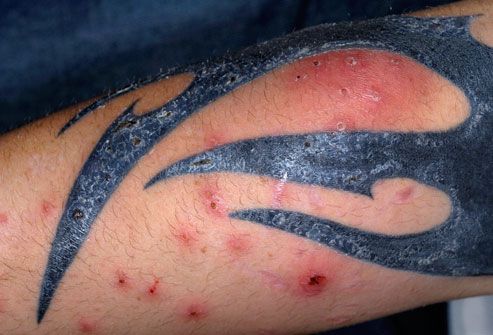|
|
|---|
Friday, December 17, 2010
The Truth about Tattoos
If you haven't noticed, tattoos are popular. Already, 25% of 18- to 30-year-olds have a tattoo. In the next few years, 40% of this age group will have a tattoo. If you think tatts are a guy thing, think again. Up to 65% of tattoo bearers are women. But before you ink, learn more about tattoos – why people get them, the health risks involved, and your removal options if you change your mind.
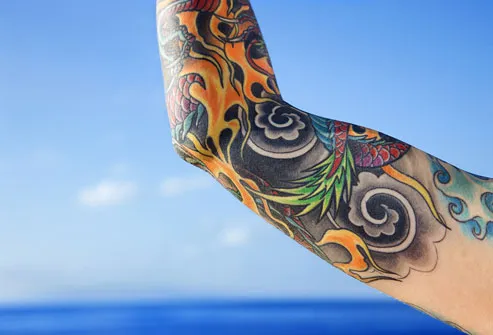
Types: Amateur Tattoos
Amateur tattoos are made by individuals or their friends by jabbing ink, charcoal, or ashes under the skin with a pin. They lack the artistry of professional tattoos. And because such tattoos are done under unsanitary conditions with unusual pigments, there is a much higher risk of infection.

Types: Cultural Tattoos
Cultural tattoos are applied via traditional methods to members of certain ethnic groups. They may serve ritual, societal, or cosmetic functions.

Types: Professional Tattoos
Professional tattoos are applied by registered artists using a tattoo machine -- the term many artists prefer to the slangy "tattoo gun."

Types: Cosmetic Tattoos
Tattoos may be used as "permanent" make-up, such as eye and lip liner, lipstick, blush, eyebrows, or hair imitation. Because tattoos do fade over time, the procedure must occasionally be repeated to keep colors fresh.
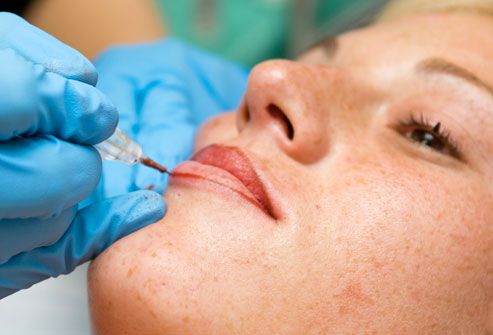
Types: Medical Tattoos
Medical tattoos are not decorative, but are placed for medical reasons:
* Patients with medical conditions or chronic diseases, such as diabetes, may use a tattoo to alert health care workers in case of an emergency.
* Doctors often use tattoos to mark specific sites for repeated application of radiation therapy.
* After breast reconstruction surgery, a tattoo may be used to simulate the nipple. This use may also be considered a cosmetic tattoo.
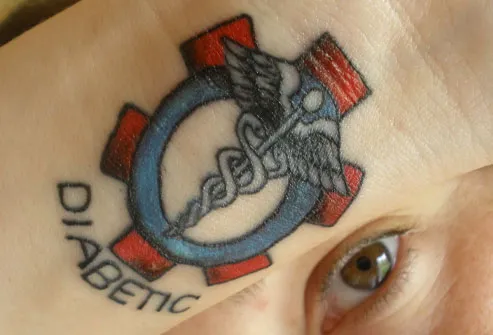
Types: Traumatic Tattoos
Traumatic tattoos occur during injuries, when dirt or other materials get imbedded in the skin. Examples include "road rash" from bike accidents or "pencil-point" tattoos (like the one shown here) from pencil punctures.
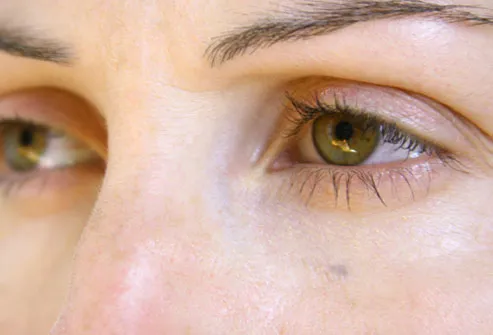
Safe Tattooing Tips
* Don't drink alcohol or take drugs (especially aspirin) the night before or while getting a tattoo.
* Don't get a tattoo if you're sick.
* Make sure all needles are removed from sterile single-use package before use.
* Make sure the studio has sterilization equipment to clean instruments after each use.
* Make sure the artist washes his hands and puts on sterile gloves; many tattooists are required to take training in the prevention of bloodborne illnesses.
* Make sure the work area is clean and clear of nonsterile objects (water bottles, purses, etc.)
* Get a list of the specific pigments used, including color, manufacturer's name, and lot number.
* After getting a tattoo, carefully follow healing instructions -- including use of antibiotic ointment.
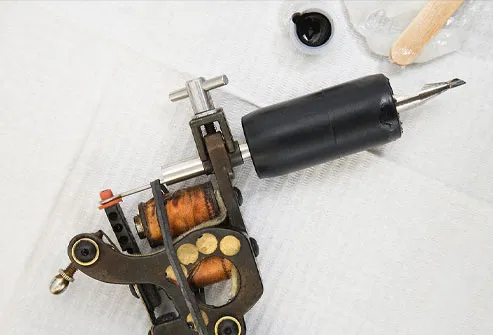
Tattoo Risks: Infection
Whatever type of tattoo you get, there are risks involved. The most serious risks are life-threatening infections, such as HIV or hepatitis C, from unclean needles. Other infections, such as a staph infection called impetigo or MRSA (shown here), or deep-skin infection cellulitis may develop. It is important to note the FDA has not traditionally regulated either tattoo inks or tattoo removal, but is currently studying the issue.
